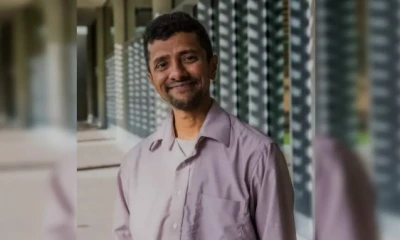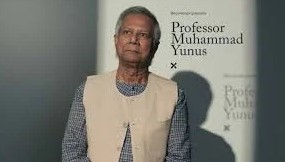Ashok Veeraraghavan, an Indian-origin professor of electrical and computer engineering at Rice University’s George R Brown School, has been honoured with the prestigious Edith and Peter O’Donnell Award. Bestowed by the Texas Academy of Medicine, Engineering, Science, and Technology-TAMEST, this award is one of Texas’ most esteemed academic accolades and recognises emerging researchers within the State. Veeraraghavan was selected for his groundbreaking imaging technology.
Veeraraghavan, originally from Chennai, and his group received this year’s engineering award for the revolutionary imaging technology seeking to make the invisible visible.
Expressing delight over the achievement, Veeraraghavan mentioned, “It is the recognition of the wonderful and innovative research that many students, postdocs and research scientists, in the computational imaging lab at Rice University have done over the last decade.”
Veeraraghavan’s computational imaging lab takes a comprehensive approach to researching imaging techniques, covering optics, sensor design, and machine learning processing algorithms. This holistic approach aims to address imaging challenges that surpass the capabilities of current technologies.
“Currently, imaging systems are often designed without considering all three elements together; they are treated as separate entities,” explained Veeraraghavan stressing, “By employing a co-design approach, we can explore new possibilities and achieve imaging functionalities and performance capabilities that were previously unattainable.”
Veeraraghavan’s research attempts to address imaging scenarios where the target of visualisation remains obscured to current imaging technologies due to light scattering in participating media. “There are numerous instances of this,” he noted.
“For instance, consider driving in foggy conditions, limiting visibility. Here, fog acts as the scattering medium. Similarly, in satellite imaging, clouds can hinder visibility by scattering light. In biological imaging, the skin serves as an obscurant, obstructing the view of blood cells or vascular structures,” he elaborated.
“Across these contexts, the primary challenge lies in light interaction with participating media, causing scattering and resulting in loss of information crucial for image capture. Imaging through scattering media remains one of the most daunting challenges in the field. Hence, it constitutes the central focus of my lab, and we’ve made significant strides toward resolving this issue.”
Rice University’s computer science and bioscience professor Luay Nakhleh extended heartfelt congratulations to Veeraraghavan for his remarkable achievement, stating that he “richly deserves this special recognition”.
“This accolade holds particular significance for our institution, as it marks the second consecutive year that one of our faculty members has been honoured with the O’Donnell Award, following Jamie Padgett’s recognition last year,” remarked Ramamoorthy Ramesh, Rice University’s executive vice president for research and a professor of materials science and nanoengineering, physics, and astronomy. Ramesh praised Veeraraghavan and accentuated the profound impact of his research.
“I am delighted to see Ashok acknowledged with the Edith and Peter O’Donnell Award, joining the ranks of esteemed prior recipients from Rice University,” Ramesh commented. “Ashok has adeptly utilised mathematics and technology to address some of the most formidable challenges in imaging. His work holds broad implications for advancing human health, microscopy, national security, autonomous vehicles, photography, and many other fields.”

















